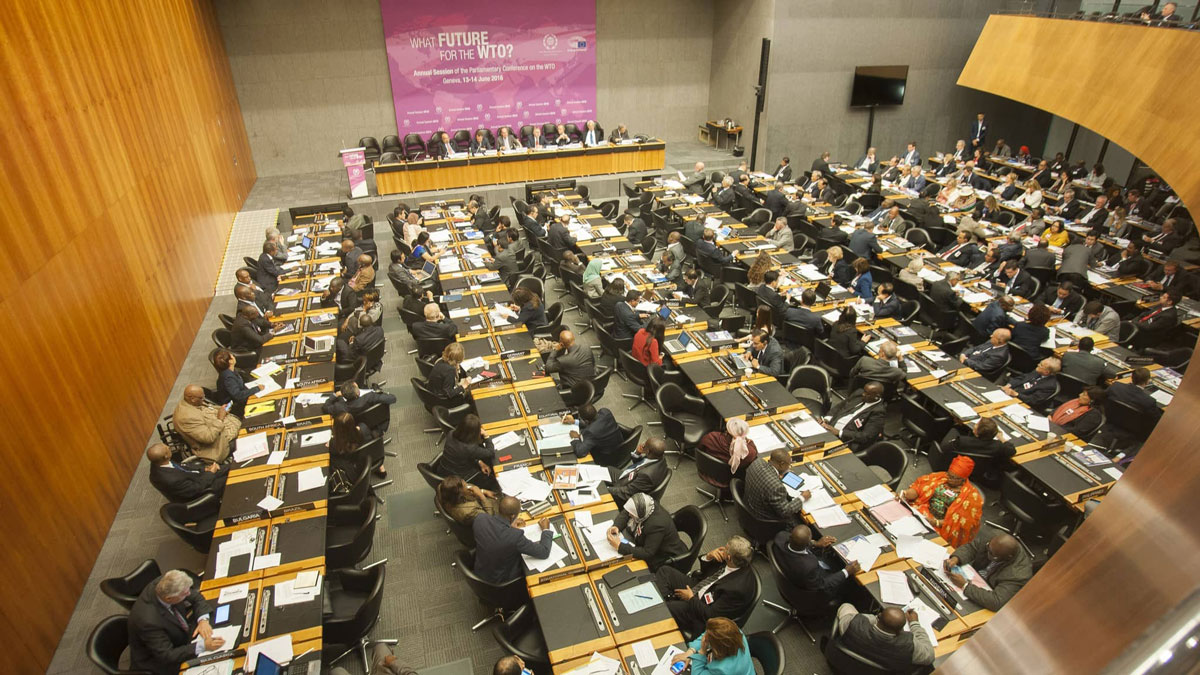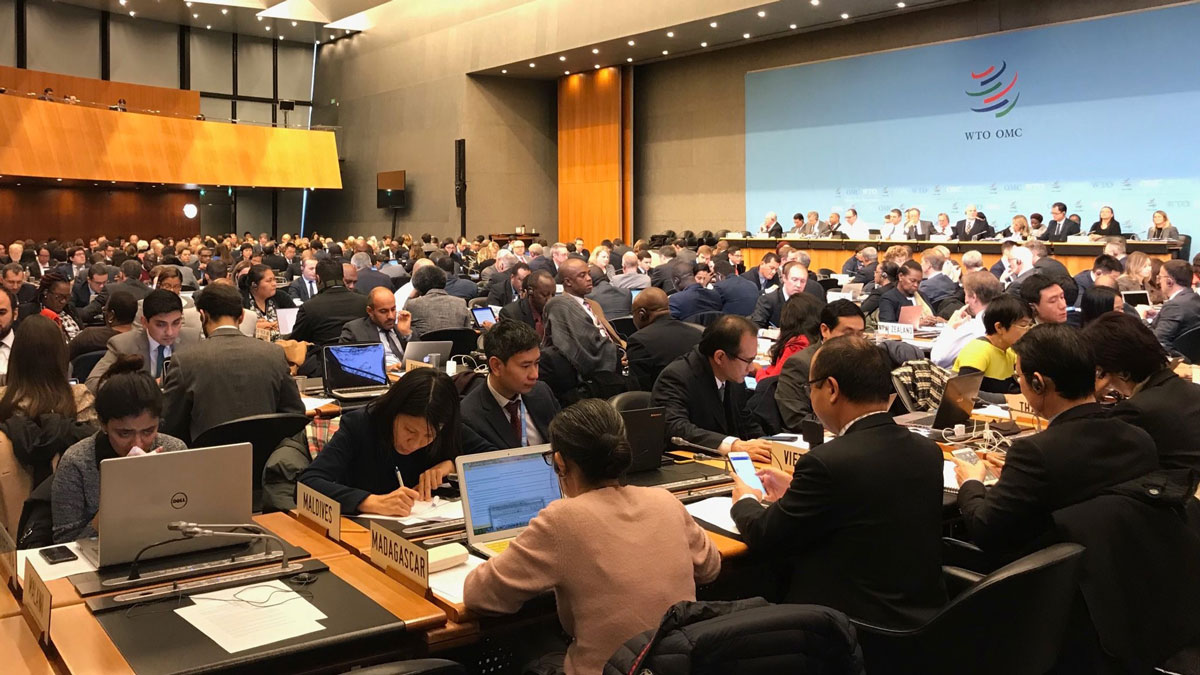Trade distortion and protectionism
Trump’s "reciprocal" tariffs took root in the WTO's failings
Published 11 February 2025
Donald Trump late Friday levied fresh tariff threats against many countries citing "reciprocity", a feature of US policy thinking that bound centuries of fluctuating US tariff levels. Amid the chaos of Trump's threats is their rarely-mentioned provenance: the 30-year failure of the global multilateral system to make its member economies bring their WTO tariff commitments in line with economic development.
All the turmoil surrounding new tariffs levied in the second week of a Trump 2.0 administration is warranted. These are serious measures that are already upending markets and relationships with close allies. Future casualties could include the efficiency and effectiveness of supply chains among trusted trading partners that have emerged since Covid-19 and collective efforts to confront challenges associated with China.
But the widespread handwringing in the United States and around the world misses a central point. In fact, tariffs have never been universally low, reciprocal, or predictable. The current multilateral trading system, first put into place in 1947 and expanded in 1995 with the creation of the World Trade Organization (WTO), accomplished a lot in lowering tariffs among member countries and establishing a system of adjudication and enforcement that (most of the time) kept tariffs from spiraling back up over many decades.
But it has had much less success in bringing all tariffs down. The last substantial tariff cuts now date back nearly 30 years, to the WTO Information Technology Agreement. This failure is one factor in generating grievances over the lack of reciprocity in tariff levels between nations. In fact, some of the large emerging economies that benefit most from exports to the United States continue to maintain high tariff rates. Then it should not be surprising that a reckoning with this imbalance might be overdue. Douglas Irwin, perhaps the preeminent scholar on the history of US trade policy, wrote in Clashing Over Commerce that, "[R]eciprocity has been a longstanding policy and tradition in American trade politics," ever since the American Revolution.
We now are at a crossroads. Tariffs are on the move, both up and down. Certainly, President Trump’s dramatic actions to raise tariffs, starting with China, Canada, and Mexico, may serve as an experiment that will test competing theories over negative or positive impacts associated with tariffs. As Harold James pointed out in his magnificent opus, The End of Globalization, in 2002, "It was the unilateral protectionism of the United States in the Hawley-Smoot tariff that gave the most powerful of the early warning signals to financial markets in 1929 and helped to precipitate the financial contagion that provided the trigger mechanism in the collapse of globalization."
But, more than two decades after James wrote that warning, tariffs also continue to move down between countries that have negotiated preferential trade agreements. For example, India has completed recent deals with Australia, the United Arab Emirates, and the European Free Trade Area (EFTA) countries comprising Iceland, Liechtenstein, Norway, and Switzerland. China has been even more active in negotiating these agreements. The United States, on the other hand, stopped negotiating such agreements during the Biden administration, so the playing field has become less level for US exporters.
Now the WTO has become ineffectual as an arbiter and is clearly unable to step up to broker a peace, even as President Trump is imposing new tariffs and threatening more to come. And some countries targeted by Trump are reacting with offers to negotiate new bilateral agreements to avoid these US tariffs, while joining others in threatening retaliatory tariffs against US exports in response. This is a far cry from the multilateral trading system’s heyday when it was universally viewed as the primary venue for negotiating new tariff commitments, modernizing trade rules, and enforcing commitments through its dispute settlement system.
There are many reasons for the WTO’s irrelevance at this historic moment. Reason one is the failure of the WTO to address China’s non-market actions and how it got to its dominance in exporting to the world. Other factors include Washington’s blows to gut the WTO’s dispute settlement system based on its perception that it has overreached and impinged on US sovereignty and the post-Covid flourishing of new industrial policies and government subsidies worldwide that undermine WTO rules.
However, one of the most compelling explanations that appears to have fallen off the radar screen of the multilateral system’s many supporters is the resistance of so many WTO members, many of which are among the largest economies of the world yet still claim developing-country status, to belly up to the bar and commit to permanent "most-favoured nation" (MFN) reductions in their tariffs to match tariff levels of other members, including the United States, that cut theirs by the largest magnitudes over the years.
Market access, of which tariffs are a central but not the only parameter of mutually beneficial trade, was one of the top priorities in the only multilateral trade negotiating round launched in the WTO’s 30-year existence in 2001, and never concluded.
After an auspicious start, the Doha Round of WTO negotiations – named for the city where they originated – slowed, then became mired in acrimonious finger-pointing before finally collapsing irreversibly in 2015. Five years after the start of the Doha Round, in 2006, then US Trade Representative (USTR) Susan Schwab remarked that, "[T]he Brazil’s, the China’s, the India’s of this world can and should be expected to participate in this negotiation, including opening their markets to benefit other developing countries because the sad fact is that developing countries, 70% of the tariffs, of the duties paid by developing countries, are paid to other developing countries." WTO negotiations on tariffs never really regained their early momentum after it became clear that high-tariff members were not interested in making reciprocal cuts.
As a result, current average tariff levels continue to vary substantially among WTO members. The WTO issues summaries of these rates at both the "bound" and "applied" levels. The term "bound" refers to the product-by-product rates that each WTO member has legally committed to, as reflected in its WTO tariff schedule, while "applied" rates are the actual tariffs in place at any given time. For example, Country X could bind its tariffs for watches at 10% yet later choose to apply those tariffs at a lower level of 5%.
There is a small group of countries that have zero-level or near-zero tariffs. For example, Singapore has an average bound rate of 8.8% but an applied rate of zero. Similarly, Brunei has an average bound rate of 25.4% but an applied rate of 0.5%. Of course, those countries could raise their tariffs in the future to bound rates without violating their WTO obligations.
Among the largest trading countries, the United States ranks at the low end of tariff levels at an average bound rate of 3.4% and applied rate of 3.3%. (This does not account for its latest tariff increases against China.) The European Union’s (EU) average bound tariff is 4.9%, and the applied rate is 5%.
In contrast, there are major developing countries that retain much higher tariffs. China, the world’s largest manufacturing economy, maintains an average bound rate of 10%, and its applied rate is 7.5%. Brazil’s is a 31.4% bound rate and 11.2% applied. India, the fifth-largest economy in the world, is an outlier among outliers, with a bound rate of 50.8% and applied rate of 17%.
International traders crave not only low tariffs but predictable ones as well. That is why the bound rate is so important. An example of unpredictability is India’s tariffs on agricultural products and, specifically, pulses. Its bound rate for pulses (such as peas and lentils) is 100% for most such products. However, India lowers and raises this tariff seasonally and, at times, unexpectedly, seeking to manage imports compared to domestic production and consumption. In addition to its use of quantitative restrictions, this constant fluctuation in tariff rates has been a perennial source of complaints from key trading partners, including Argentina, Australia, Canada, the EU, and the United States.
The good news is that tariffs remain at generally historic lows. However, the lowest tariffs are increasingly reserved for countries in preferential trade agreements, such as free trade agreements.
The United States under both Trump and Biden justified higher tariffs exceeding WTO commitments by arguing that national security and dependable supply chains were at stake, which triggered complaints over whether such moves were legal in the judgment of the WTO. The complaints, however, do not take into account the fact that other members, such as India, Indonesia, and South Africa, can raise their tariffs without violating WTO rules because their bound commitments, negotiated decades ago and justified as necessary to reflect their developing economy status, are so much higher. This policy space is a luxury that is available to many self-designated developing countries but not to the likes of the United States, the EU, and others in the distinct minority of low-tariff countries.
There is no easy answer to this complicated state of affairs. The Trump administration chooses raising its tariffs as leverage to gain concessions from others. Many other trading partners choose to go down the path of negotiating preferential trade agreements, obtaining tariff cuts bilaterally or in smaller groups rather than through multilateral negotiations at the WTO. Increasingly, there appears to be good reasons for doing so.
The ideal scenario given this cold reality is that trading partners find new ways to maintain global trade on equitable terms through balanced tariff cuts and reductions in non-tariff barriers. Given that the current multilateral system is unlikely to deliver an answer in the foreseeable future, a likelier approach for cutting tariffs worldwide may be through bilateral, plurilateral, and regional agreements.
One could err on the side of optimism and, to paraphrase Harold James, hope that the pendulum swings back and the next cycle of globalization begins again. But it is hard not to see the potentially concurrent scenario of broad competitive tariff escalation, spelling disaster for economic growth and global stability.
© The Hinrich Foundation. See our website Terms and conditions for our copyright and reprint policy. All statements of fact and the views, conclusions and recommendations expressed in this publication are the sole responsibility of the author(s).






